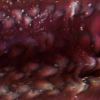Free Online Productivity Tools
i2Speak
i2Symbol
i2OCR
iTex2Img
iWeb2Print
iWeb2Shot
i2Type
iPdf2Split
iPdf2Merge
i2Bopomofo
i2Arabic
i2Style
i2Image
i2PDF
iLatex2Rtf
Sci2ools
ICCV
2007
IEEE
2007
IEEE
Rectified Surface Mosaics
We approach mosaicing as a camera tracking problem within a known parameterized surface. From a video of a camera moving within a surface, we compute a mosaic representing the texture of that surface, flattened onto a planar image. Our approach works by defining a warp between images as a function of surface geometry and camera pose. Globally optimizing this warp to maximize alignment across all frames determines the camera trajectory, and the corresponding flattened mosaic image. In contrast to previous mosaicing methods which assume planar or distant scenes, or controlled camera motion, our approach enables mosaicing in cases where the camera moves unpredictably through proximal surfaces, such as in medical endoscopy applications.
Camera Motion | Camera Pose | Camera Tracking Problem | Camera Trajectory | Computer Vision | Flattened Mosaic Image | ICCV 2007 |
| Added | 14 Oct 2009 |
| Updated | 30 Oct 2009 |
| Type | Conference |
| Year | 2007 |
| Where | ICCV |
| Authors | Robert E. Carroll, Steven M. Seitz |
Comments (0)

